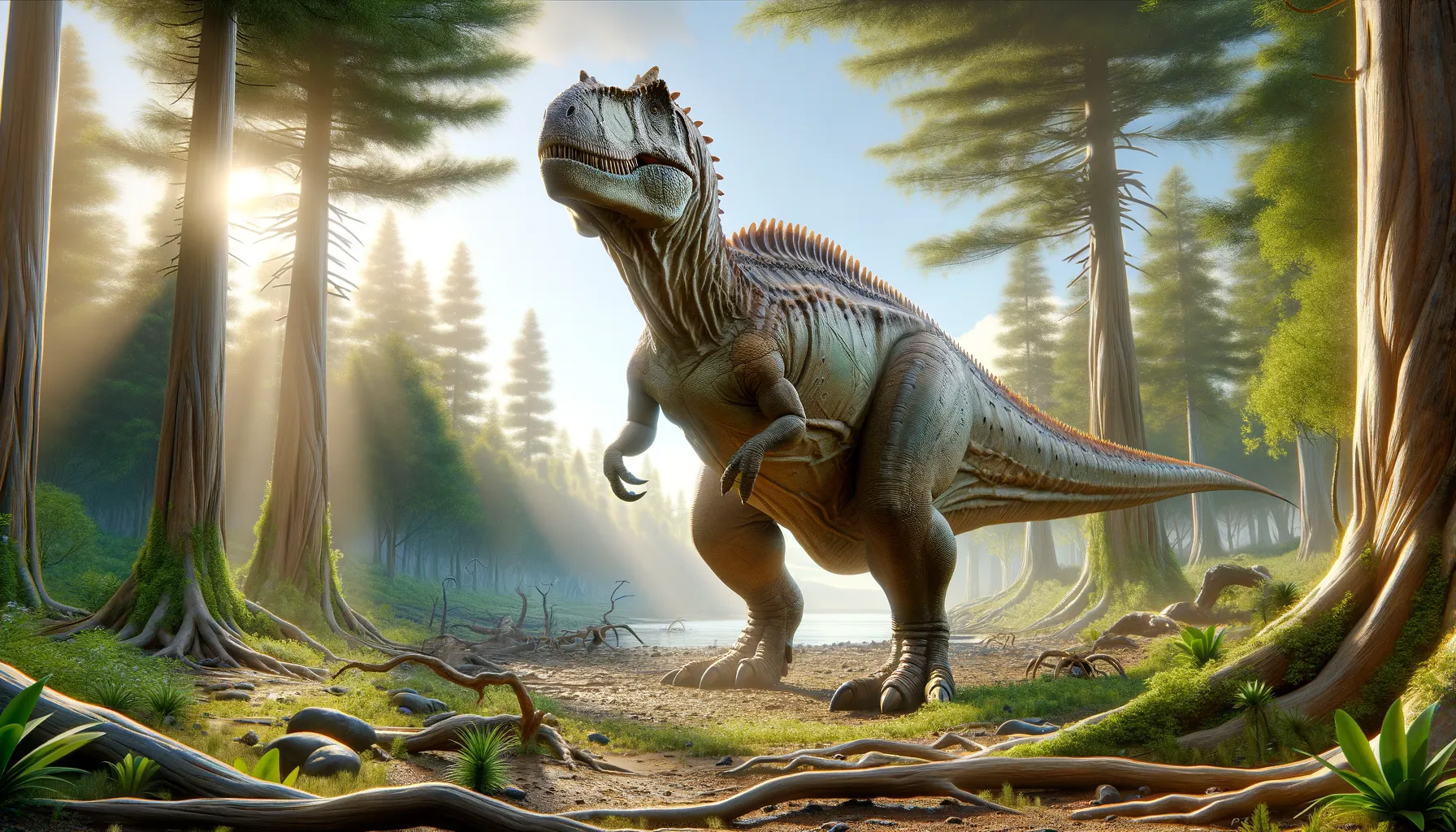
Europelta
Armored sentinel of the ancient forests.
Period
Cretaceous
Length
About 5 meters long.
Height
Around 1.5 meters tall.
Weight
Approximately 2 tons.
Europelta was a heavily armored, plant-eating dinosaur that lived during the Early Cretaceous period. This ankylosaur had a stout, robust body covered in bony plates, giving it a formidable defense against predators. Although it was not very fast, its armor provided great protection. Discovered in Spain, Europelta is known for expanding our understanding of Europe's ancient dinosaur fauna and ecosystems, offering insights into the region's prehistoric life.
Diet
Europelta was a herbivore, feeding primarily on low-lying vegetation. It likely ate a variety of ferns, cycads, and early flowering plants available during its time. Its broad mouth and beak-like jaw were well adapted for cropping tough plants.
Hunting
Being a herbivore, Europelta did not hunt for food. It grazed the ancient forests, using its strong jaws to nip off vegetation. Its slow pace helped it conserve energy as it foraged for food.
Environmental challenges
Europelta faced predators, although its armor provided significant protection. Besides avoiding threats, it had to compete for limited plant resources with other herbivores. Climate changes at the time possibly affected the availability of food, forcing it to adapt to shifting landscapes. Seasonal fluctuations may have also posed challenges, requiring migration in search of better foraging opportunities.
Speed
Slow-moving due to heavy armor.
Lifespan
Estimated to be several decades.
First discovery
Discovered in Spain in 2013.
Fun Facts
- Europelta was a type of ankylosaur, known for its armor-like plates and spikes, found in what is now Spain.
- It lived during the Early Cretaceous period, about 110 million years ago.
- Europelta got its name from the Latin words for Europe and shield, highlighting its armored nature.
- It was one of the most complete ankylosaur skeletons found in Europe, which helped paleontologists understand more about this group of dinosaurs.
- Europelta was about 5 meters long, making it one of the larger ankylosaurs discovered in Europe.
- This dinosaur likely lived in a dense forest environment, feeding on low-lying plants with its leaf-shaped teeth.
- Despite its heavy armor, Europelta was likely a slow-moving creature, relying on its tough exterior for protection from predators.
Growth and Development
Europelta likely hatched from eggs and underwent a growth period similar to modern reptiles. During its early years, it was vulnerable and relied on its growing armor for protection. As it matured, it developed the full suite of defensive features, including bony plates and possible spikes, enhancing its survival capacity. Its growth was probably gradual, allowing for adaptations to its size and changing environment.
Habitat
Europelta lived in dense, leafy forests, which provided ample food and cover. These environments were rich in plant life conducive to a herbivorous diet. The forested areas also offered protection from larger predators, providing an ideal setting for its slow-moving lifestyle. The diversity of plants would have supported its feeding habits, allowing it to thrive.
Interaction with other species
Europelta coexisted with various other dinosaurs, including therapods, which could have been potential predators. Its interaction likely involved avoiding these threats using its armored defenses. Among other herbivores, it might have engaged in indirect competition for food. It likely had a passive interaction approach, focusing more on feeding and surviving rather than actively engaging with other species.
Natural lifespan
Europelta likely lived up to several decades if it avoided predation and disease.
Reproduction
Europelta laid eggs like most dinosaurs of its time, possibly in nests hidden within the dense underbrush. It may have exhibited some form of parental care, at least until the young were mobile. The parents possibly used their armored bodies as a shield for the nest against smaller predators. The egg-laying strategy ensured that at least some offspring survived to adulthood.
Social behaviour
Europelta might have displayed solitary behavior, especially as an adult, relying more on its physical defenses than group dynamics. However, young adults possibly stayed in groups for protection. Largely focused on foraging and food intake, social interactions would have been minimal. Any group behavior was likely a strategy for avoiding predators rather than complex social structuring.
Fossil locations
Fossils of Europelta have been found in the province of Teruel, Spain. These discoveries are significant, as they represent some of the best-preserved ankylosaur specimens from Europe. The fossils contribute valuable data towards understanding the area's paleobiology during the Early Cretaceous period. Findings suggest the region was a diverse ecosystem teeming with unique prehistoric life.
